SouthAfrica – Day 1 – Cape Point
Thursday, 14-Aug-2014
Tags: Travel
Our first full day in South Africa was an amazing trip down to Cape Point which is where the Cape of Good Hope is. I always thought the Cape of Good Hope was the southern tip of Africa but as you can see from the following — it isn’t.
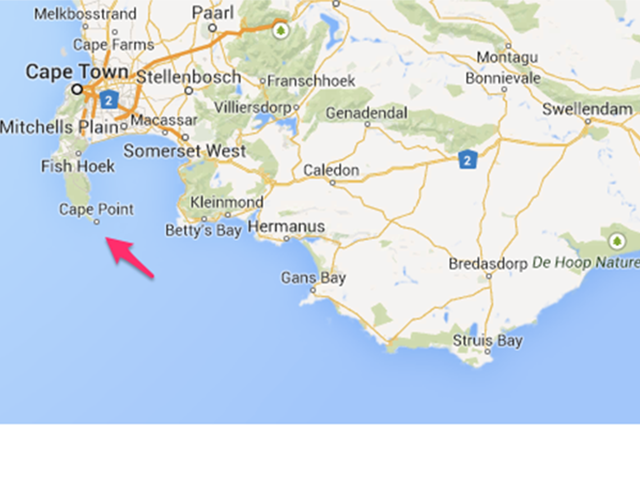
We started the drive down at 6AM. It was chilly and rainy when we started, but the rain had stopped by the time we got there and the weather just kept getting nicer and nicer.
We drove down the eastern side of the peninsula to Cape Point National Park. The park had three things to keep us busy: views, animals, and flowers, and we spent time on all three.
First the views. At the very tip, there are actually three capes, the Cape of Good Hope, Cape Maclear, and Cape Point (west to east). We hit the peak of each of them.
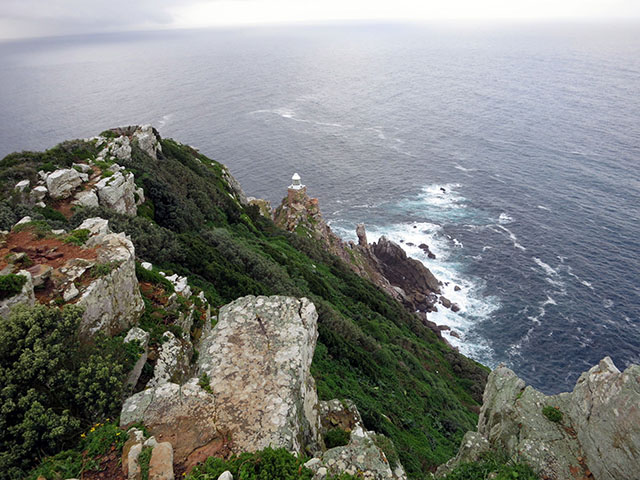
Cape Point has a lighthouse — actually two of them. The older one was near the top of the cliff (probably around the place where the above picture was taken). It gets pretty foggy in this area and the old lighthouse was high enough that it would get hidden in the fog (yes, at exactly the time when you really needed a light house). Eventually it was replaced by the one shown in the picture.
Cape Maclear and the Cape of Good Hope are close together (to our right in the above picture.) Below, you can see Maclear pointing to the lower left and the Cape of Good Hope pointing to the upper left (Cape Point is off screen to the left).
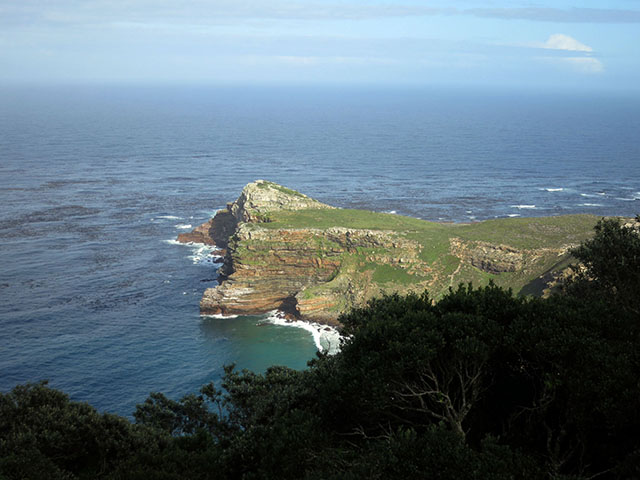
At sea level between Cape Point and the other two was some really nice beach area (Dias Beach). You had to walk down A LOT of steps to get there. (And you had to walk up a lot of steps to get back). (That’s Cape Maclear).
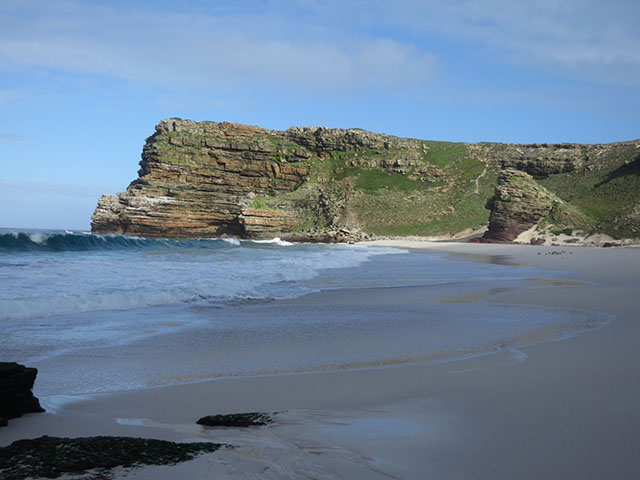
And here is a picture of us at the top of the formation above.
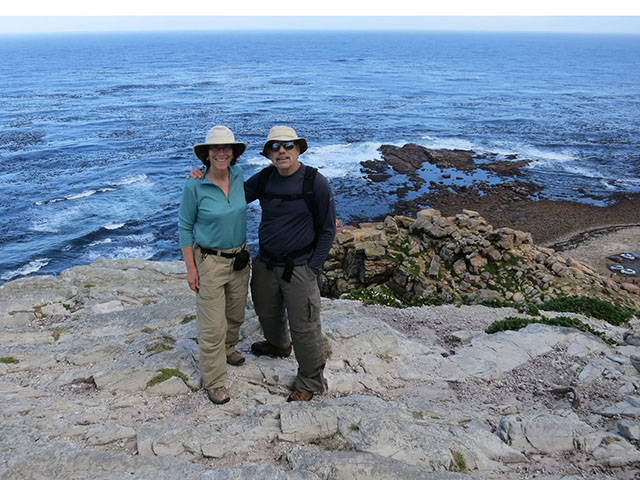
Now, the animals. We saw baboons, ostriches, bontebock (a type of antelope), daisse (a rock hyrax — a relative of the elephant that looks like a rat the size of a big groundhog, yeh, huh?), seals, several types of birds, especially ibis, cormorant, and albatross. (all in order below, no cormorant or albatross though).
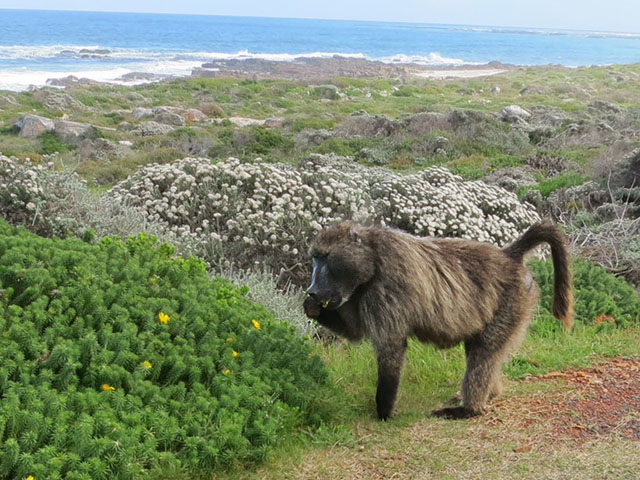
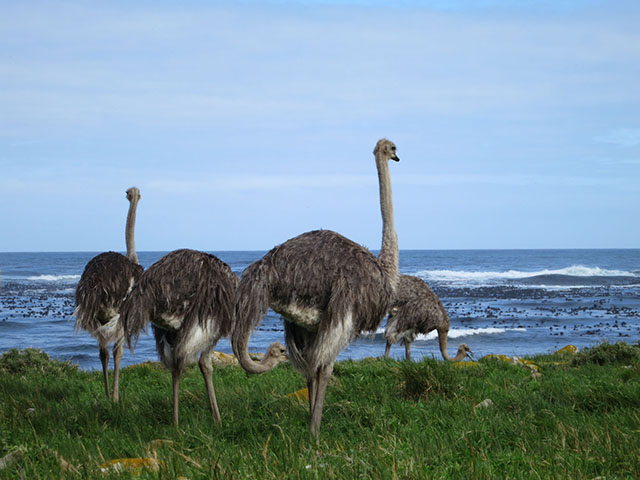
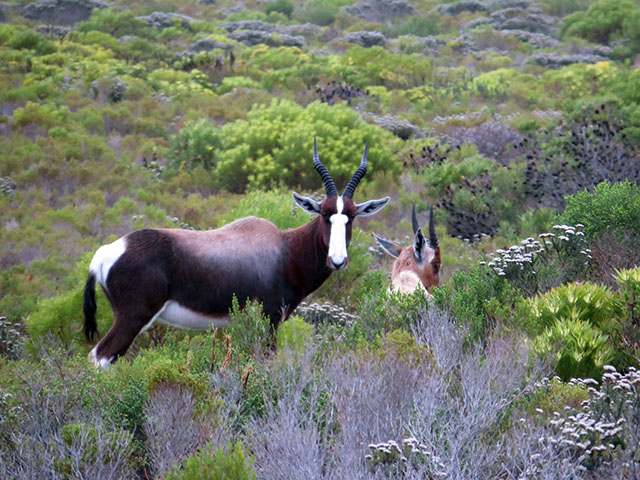
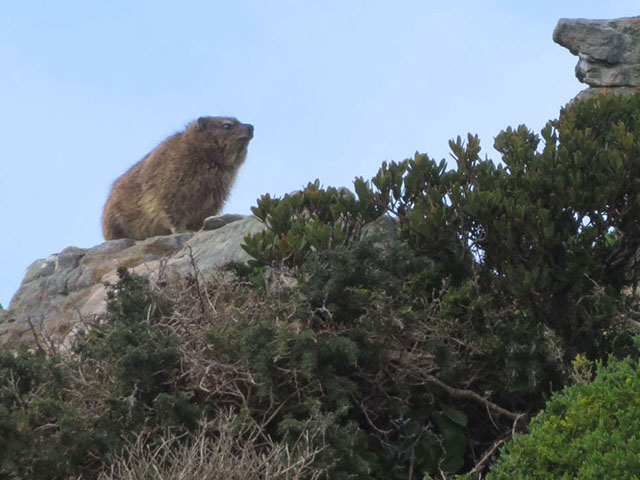
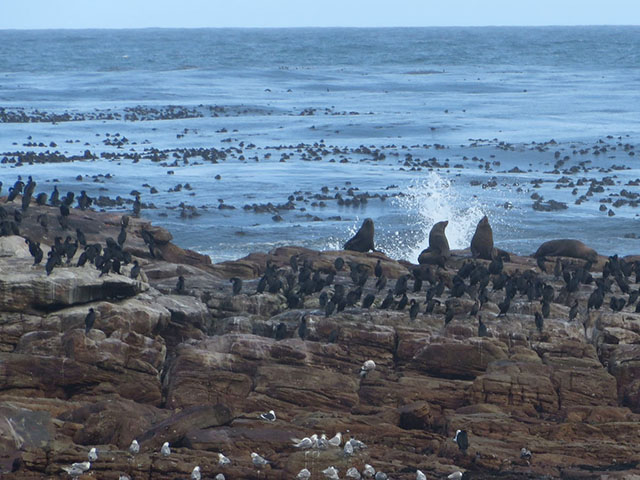
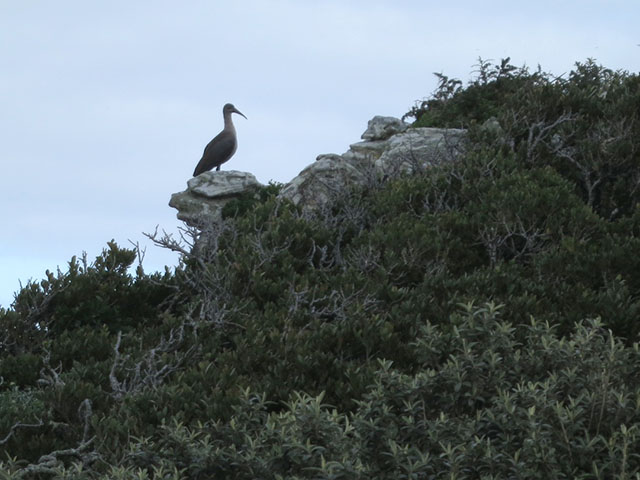
Then finally the flowers. Our tour guide Warren was an expert on the plants of the area. He could identify hundreds of plants and flowers by both common and latin names, and which ones had medicinal usages. As you can see in the baboon and ostrich pictures, there are lots of different types of low bushes in the area (in the aggregate called fynbos or fine bush). He would randomly break off a piece of one, crush it in his hand, and tell us to smell it. There were lots of really interesting smelling plants (camphor, sage, etc.) and then he would tell us what it was used for medicinally.
But then there were also lots of amazing flowers. He was a huge fan of the wild orchids which were pretty hard to find (but he knew exactly where to look). Here is a Granny-bonnet.
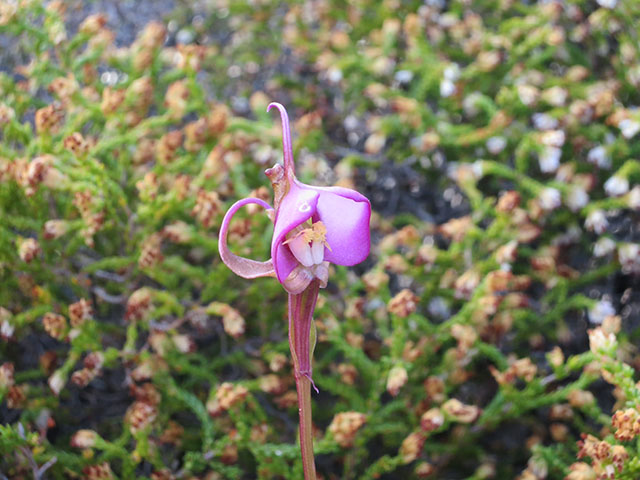
There was also an insectivore plant, a Drosera.
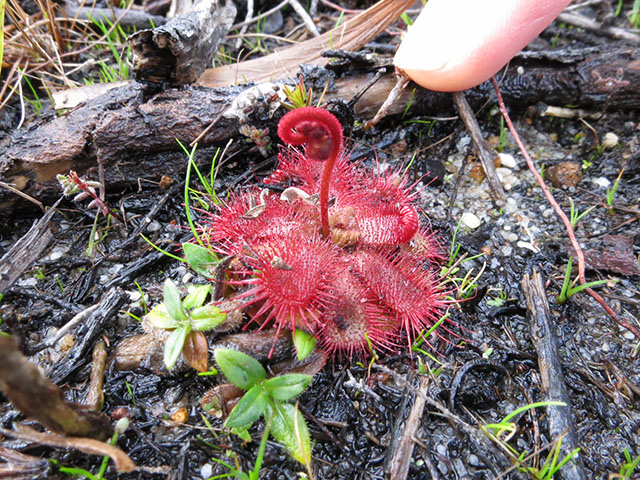
The red spines of this plant attracted ants. They were sticky and when the ant walked onto it it would be stuck. The the plant slowly wrapped some of its body around the ant and eventually digested it. You can see an ant in the one above.
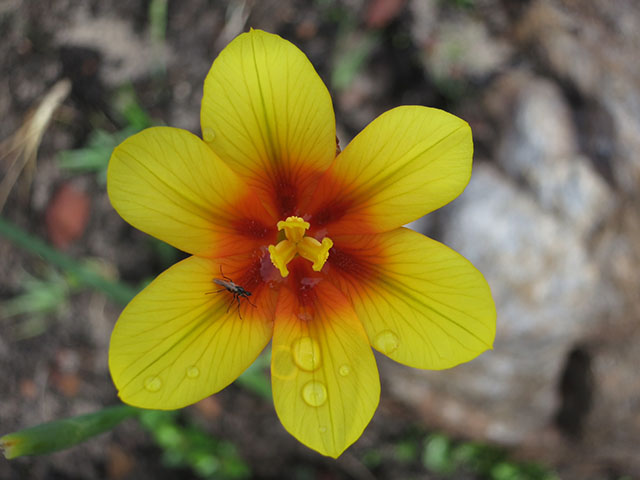
And some more pretty plants.
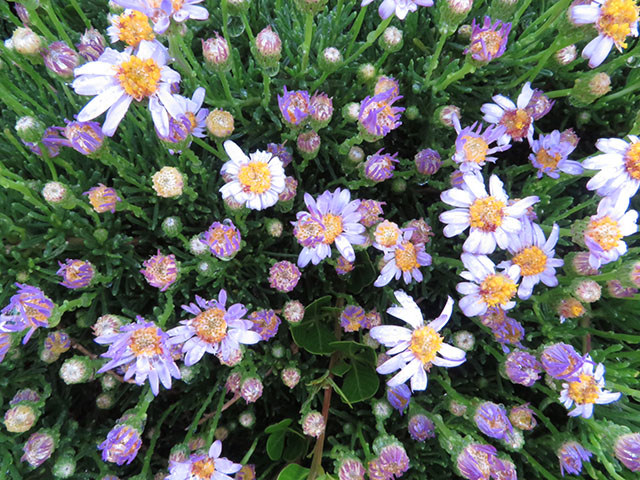
After we left the park, we drove up the stopped at Boulders Beach National Park in Simon’s Town, the home for the African Penguin.
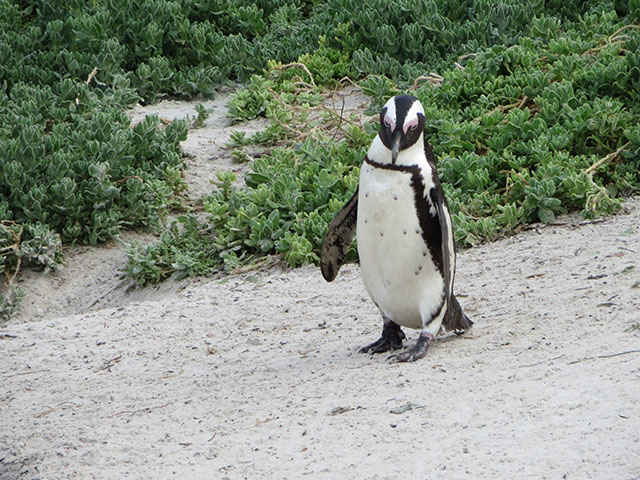
Then we cut over the west side and drove the Chapman’s Peak drive. Very nice!
One amazing day!
Links:
--
Larry and Eileen Samberg

















